Related Research Articles
The following outline is provided as an overview of and topical guide to critical theory:

A turbine is a rotary mechanical device that extracts energy from a fluid flow and converts it into useful work. The work produced by a turbine can be used for generating electrical power when combined with a generator. A turbine is a turbomachine with at least one moving part called a rotor assembly, which is a shaft or drum with blades attached. Moving fluid acts on the blades so that they move and impart rotational energy to the rotor. Early turbine examples are windmills and waterwheels.
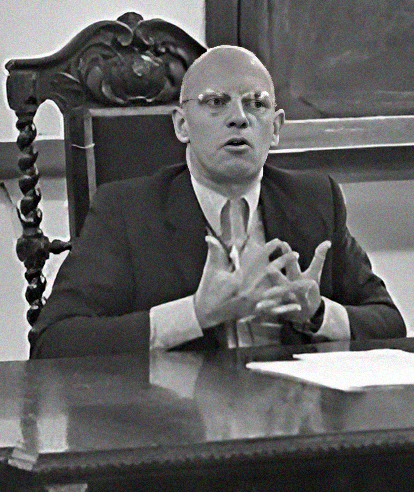
Paul-Michel Foucault was a French philosopher, historian of ideas, writer, political activist, and literary critic. Foucault's theories primarily address the relationship between power and knowledge, and how they are used as a form of social control through societal institutions. Though often cited as a structuralist and postmodernist, Foucault rejected these labels. His thought has influenced academics, especially those working in communication studies, anthropology, psychology, sociology, criminology, cultural studies, literary theory, feminism, Marxism and critical theory.
Foucault may refer to:

The Foucault pendulum or Foucault's pendulum is a device named after French physicist Léon Foucault, conceived as an experiment to demonstrate the Earth's rotation. The pendulum was introduced in 1851 and was the first experiment to give simple, direct evidence of the Earth's rotation. Foucault pendulums today are popular displays in science museums and universities.
The Fizeau–Foucault apparatus is either of two types of instrument historically used to measure the speed of light. The conflation of the two instrument types arises in part because Hippolyte Fizeau and Léon Foucault had originally been friends and collaborators. They worked together on such projects as using the Daguerreotype process to take images of the Sun between 1843 and 1845 and characterizing absorption bands in the infrared spectrum of sunlight in 1847.
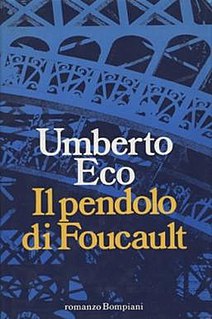
Foucault's Pendulum is a novel by Italian writer and philosopher Umberto Eco. It was first published in 1988, and an English translation by William Weaver appeared a year later.
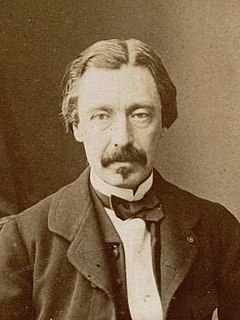
Jean Bernard Léon Foucault was a French physicist best known for his demonstration of the Foucault pendulum, a device demonstrating the effect of Earth's rotation. He also made an early measurement of the speed of light, discovered eddy currents, and is credited with naming the gyroscope.

Armand Hippolyte Louis Fizeau FRS FRSE MIF was a French physicist, best known for measuring the speed of light in the namesake Fizeau experiment.

Pierre-Simon Girard was a French mathematician and engineer, who worked on fluid mechanics.
The year 1851 in science and technology involved some significant events, listed below.
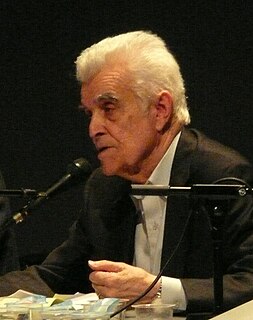
René Noël Théophile Girard was a French polymath, historian, literary critic, and philosopher of social science whose work belongs to the tradition of philosophical anthropology. Girard was the author of nearly thirty books, with his writings spanning many academic domains. Although the reception of his work is different in each of these areas, there is a growing body of secondary literature on his work and his influence on disciplines such as literary criticism, critical theory, anthropology, theology, psychology, mythology, sociology, economics, cultural studies, and philosophy.

Arthur Elmer Reimer was an American socialist political activist and politician who served as the presidential candidate of the Socialist Labor Party of America twice.

Violence and the Sacred is a 1972 book about the sacred by the French critic René Girard, in which the author explores the ritual role of sacrifice. The book received both positive reviews, which praised Girard's theory of the sacred, and more mixed assessments. Some commentators have seen the book as a work that expresses or points toward a Christian religious perspective. However, the book has also been seen as "atheistic" or hostile to religion. Violence and the Sacred became highly influential, in anthropology, literary criticism, and even Christology. It has been compared to the classicist Walter Burkert's Homo Necans (1972). Girard further developed its ideas in a subsequent book, Things Hidden Since the Foundation of the World (1978).
Events from the year 1868 in France.
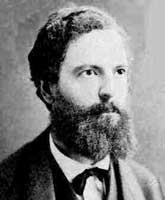
Claude Burdin was a French engineer. Born in Lépin-le-Lac, Savoie, when it was known as the Duchy of Savoy, he was professor at the school of mines, École nationale supérieure des mines de Saint-Étienne, in Saint-Étienne. He became a French citizen on June 4, 1817. He proposed the concept and developed the term turbine from the Greek word τύρβη, meaning "whirling" or a "vortex".
Alfred François Donné was a French bacteriologist and doctor. He was born in Noyon, France, and died in Paris. Donné was the discoverer of Trichomonas vaginalis. He was also the inventor of the photomicrography.
Martial Joseph Armand Herman (guillotined), was a lawyer and a chief judge during the Reign of Terror. His most famous cases were against Marie Antoinette and Georges Danton. As the commissioner of police he dealt with the Luxembourg prison conspiracies, shortly before the Jacobin regime fell.
Glenn Barton Warren was an American mechanical engineer, business executive and inventor, who was vice president and general manager of the turbine division of General Electric. In 1951 he was awarded the ASME Medal.
References
- ↑ Tobin, William. The Life and Science of Léon Foucault: The Man who Proved the Earth, Cambridge University Press, 2003, p. 104. ISBN 0-521-80855-3
- ↑ Garnett, William Hubert Stuart. Turbines, G. Bell and sons, 1908, pp. 56-59.